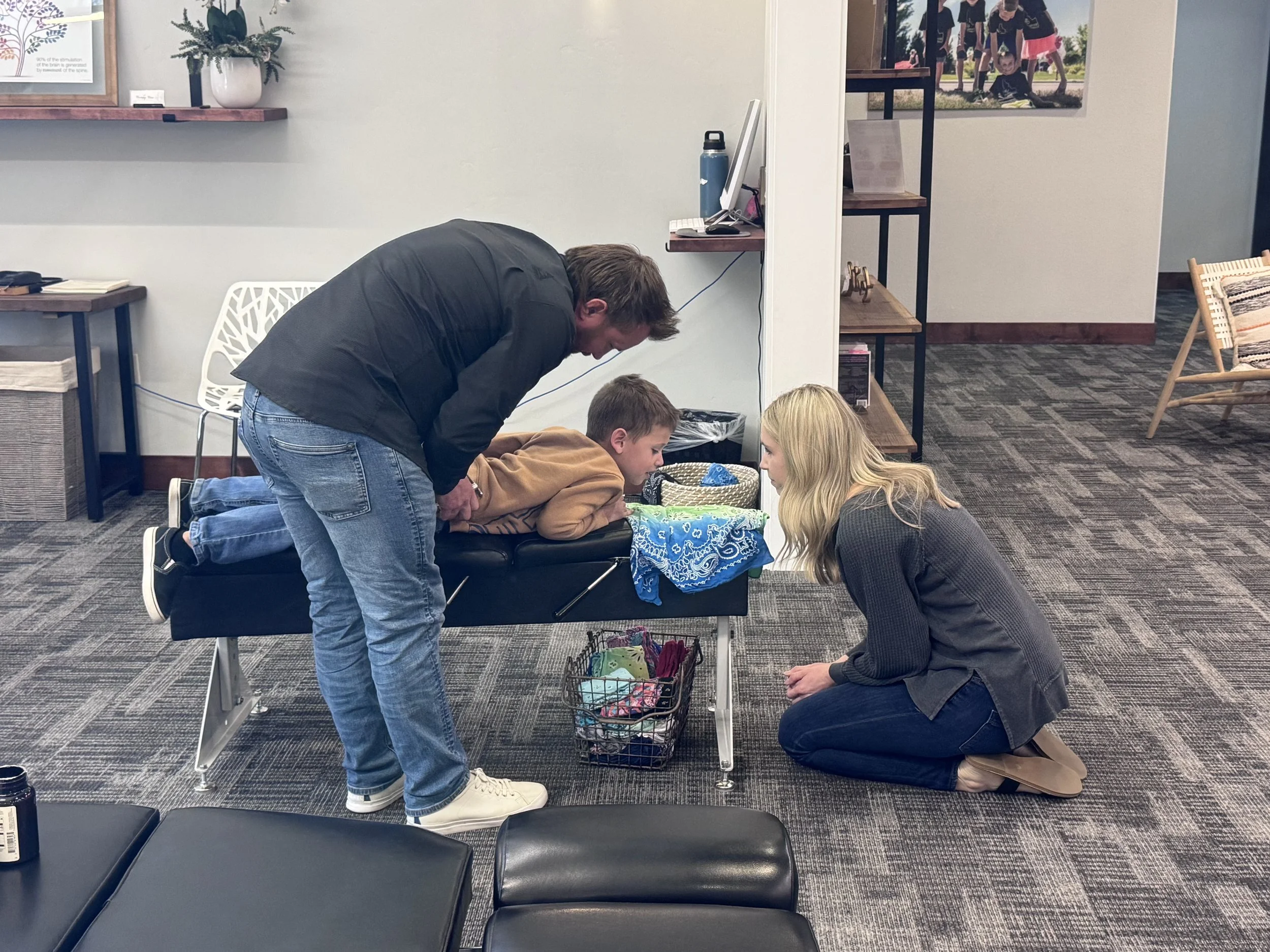🧠 Building Nervous System Resilience: What Every Parent Needs to Know
Why does one child bounce back quickly from stress, while another melts down from the smallest disruption?
The answer lies in nervous system resilience—a child’s ability to regulate, adapt, and recover from challenges. And the good news? Resilience isn’t just something you're born with—it’s something that’s built, strengthened, and shaped over time.
At Purpose Driven Chiropractic, we help parents understand that healing isn’t just about getting rid of symptoms—it’s about helping the nervous system become strong enough to meet the world without being overwhelmed by it.
What is Nervous System Resilience?
Resilience is your child’s ability to shift from stress back into balance—to go from fight-or-flight to rest-and-digest. A resilient nervous system doesn’t get stuck. It flows, responds, recovers.
But when stress builds up and isn’t resolved, the nervous system can get stuck in survival mode—leading to symptoms like:
Chronic anxiety or meltdowns
Sleep struggles
Poor digestion or food sensitivities
Sensory overload
Trouble focusing or sitting still
These are not personality flaws—they are neurological signs of a nervous system under too much pressure and with too little reserve.
How Is Resilience Built?
Resilience begins early—in utero—and continues to develop in critical windows of early childhood. The nervous system is shaped by experiences of safety, stress, and connection.
But here's the key: resilience is built through regulation, and regulation happens in relationship.
That means things like:
A calm parent co-regulating their baby’s distress
Safe environments where big emotions are met with connection, not correction
Frequent, consistent sensory input that tells the brain: “You’re safe.”
Every time a child experiences safety after stress, the nervous system strengthens its ability to bounce back.
Where Chiropractic Comes In
Chiropractic doesn’t force the nervous system to calm down—it helps it remember how.
Adjustments stimulate the sensory receptors of the spine, which send powerful feedback to the brain. That feedback helps shift the body out of fight-or-flight and into a more balanced, adaptable state.
Dr. Heidi Haavik’s research shows that adjustments impact areas of the brain like the prefrontal cortex—the part responsible for emotional regulation, focus, and adaptability.
By removing subluxation and improving communication between brain and body, chiropractic care helps:
✅ Regulate the stress response
✅ Improve heart rate variability (HRV)
✅ Increase sensory processing and integration
✅ Strengthen emotional and behavioral flexibility
Everyday Ways to Support Resilience at Home
Nervous system health isn’t built in an instant—it’s built through rhythm, relationship, and repetition. Here are ways you can support it at home:
🔹 Routines & Rhythm – Predictability tells the brain it’s safe. Regular meals, bedtime routines, and downtime matter.
🔹 Movement & Play – Gross motor activity (running, swinging, crawling) strengthens brain-body communication and emotional regulation.
🔹 Screen-Free Sensory Time – Time in nature, water play, barefoot walks—these all give calming feedback to the nervous system.
🔹 Sleep Support – A rested brain is a regulated brain. Support melatonin production with early bedtimes, magnesium, and low evening light.
🔹 Connection Over Correction – Co-regulation builds self-regulation. Your calm presence wires their safety.
Final Thoughts: Resilience is the Foundation for Thriving
If your child seems to struggle more than others… if they’re often stuck in overwhelm… if traditional routes haven’t worked…
There’s hope.
You’re not missing anything. You’re just starting in the wrong place.
True healing and thriving begin by restoring nervous system resilience—so the brain and body can do what they were designed to do: adapt, grow, and thrive.
📅 Ready to begin your child’s journey toward regulation, connection, and resilience?
📍 Schedule an Insight Scan at Purpose Driven Chiropractic and take the first step in seeing where stress is stored—and where healing begins.


